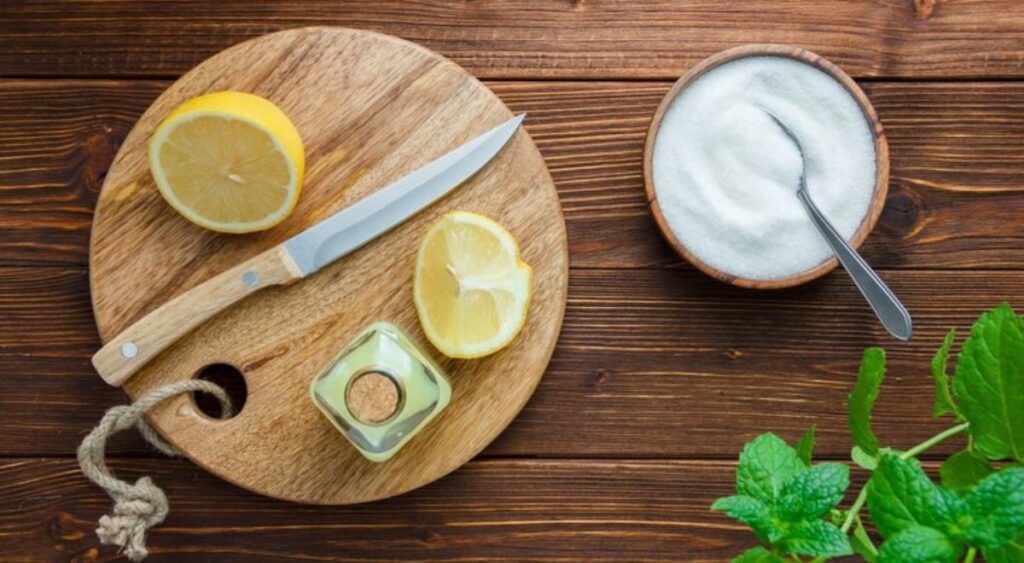Introduction to Lemon Balm Salve Recipe in 2024
Lemon balm is a member of the mint family, known for its lemon-scented leaves. This herb is often used to relieve stress, improve sleep, and aid digestion. Its calming properties make it a valuable ingredient in skincare. When prepared as a salve, lemon balm can be applied topically to help soothe minor skin irritations, reduce inflammation, and promote healing.
Creating your own lemon balm salve allows you to customize the ingredients to your liking and ensure that you are using high-quality, natural components. This homemade salve can be used for various purposes, including treating dry skin, minor cuts, bruises, and even insect bites.

Table of Contents
Benefits of Lemon Balm Salve
Before diving into the recipe, it’s important to understand the benefits of lemon balm salve:
- Anti-inflammatory Properties: Lemon balm contains compounds that have anti-inflammatory effects, which can help reduce redness and swelling in the skin.
- Antioxidant Effects: The herb is rich in antioxidants, which help protect the skin from damage caused by free radicals.
- Antimicrobial Qualities: Lemon balm has antimicrobial properties that can help prevent infections in minor cuts and abrasions.
- Soothing and Calming: The calming effect of lemon balm can help soothe irritated skin and provide relief from itching.
- Moisturizing: The base ingredients of the salve, such as beeswax and oils, provide deep hydration to dry and chapped skin.
Ingredients for Lemon Balm Salve
To make your own lemon balm salve, you will need the following ingredients:
- Dried Lemon Balm Leaves: You can purchase these from health food stores or grow them yourself.
- Carrier Oil: Olive oil, almond oil, or coconut oil can be used as the base oil for the salve.
- Beeswax: This helps to solidify the salve and provides a protective barrier for the skin.
- Optional Essential Oils: For added fragrance and therapeutic benefits, you can add essential oils like lavender or tea tree oil.
Lemon Balm Salve Recipe in 2024
Here is a step-by-step guide to making your own lemon balm salve:
Ingredients
- 1 cup dried lemon balm leaves
- 1 cup carrier oil (olive oil, almond oil, or coconut oil)
- 1/4 cup beeswax pellets
- Optional: 10-15 drops of essential oil (such as lavender or tea tree oil)

Instructions
- Infuse the Oil:
- Place the dried lemon balm leaves in a clean, dry glass jar.
- Pour the carrier oil over the leaves until they are fully submerged.
- Seal the jar and place it in a warm, sunny spot for about 2-4 weeks. Shake the jar gently every day to help the infusion process.
- Strain the Oil:
- After the infusion period, strain the oil through a fine mesh strainer or cheesecloth to remove the lemon balm leaves. Ensure the oil is clear and free of debris.
- Melt the Beeswax:
- In a double boiler, melt the beeswax pellets over low heat. Be careful not to overheat or burn the beeswax.
- Combine Oil and Beeswax:
- Once the beeswax is melted, slowly add the infused lemon balm oil to the double boiler. Stir continuously until the mixture is well combined and fully melted.
- Add Essential Oils (Optional):
- If desired, add 10-15 drops of essential oil to the mixture. Stir well to incorporate the essential oils evenly.
- Pour into Containers:
- Pour the hot salve mixture into clean, sterilized jars or tins. Allow the salve to cool and solidify completely before sealing the containers.
- Store and Use:
- Store the salve in a cool, dry place. It should keep for several months. Apply a small amount to affected areas as needed.

Nutrient Table
To better understand the benefits of the ingredients used in lemon balm salve, here is a nutrient table highlighting the key components:
| Ingredient | Nutrients | Benefits |
|---|---|---|
| Lemon Balm Leaves | Rosmarinic acid, flavonoids, tannins | Anti-inflammatory, antioxidant, antimicrobial, soothing |
| Olive Oil | Monounsaturated fats, vitamin E, polyphenols | Moisturizing, antioxidant, anti-inflammatory |
| Beeswax | Vitamin A, fatty acids, antioxidants | Moisturizing, protective barrier, anti-inflammatory |
| Essential Oils | Varies by oil (e.g., lavender: linalool, linalyl acetate) | Antiseptic, calming, additional fragrance |
FAQs
Can you apply lemon balm directly on skin?
Yes, you can apply lemon balm directly to the skin. It’s often used in creams and ointments for its soothing and anti-inflammatory properties. However, it’s best to do a patch test first to ensure you don’t have an allergic reaction.
What not to mix lemon balm with?
Avoid mixing lemon balm with other strong herbs or medications that may cause drowsiness or interact adversely, such as sedatives or antidepressants. Always consult a healthcare provider before combining lemon balm with other treatments.
Conclusion
Making your own lemon balm salve is a rewarding and practical way to incorporate the healing properties of this wonderful herb into your skincare routine. Not only does it provide relief for various skin issues, but it also allows you to control the quality and composition of the salve. By using natural ingredients and following the recipe outlined in this guide, you can create a soothing, effective salve tailored to your needs.
Whether you’re treating dry skin, soothing minor irritations, or simply enjoying the calming aroma of lemon balm, this homemade salve is a great addition to your natural skincare arsenal. Experiment with different carrier oils and essential oils to find the combination that works best for you. Enjoy the benefits of lemon balm and take pride in your homemade creation!
For more DIY skincare tips and natural remedies, stay tuned to our blog and explore our other articles. Happy crafting!